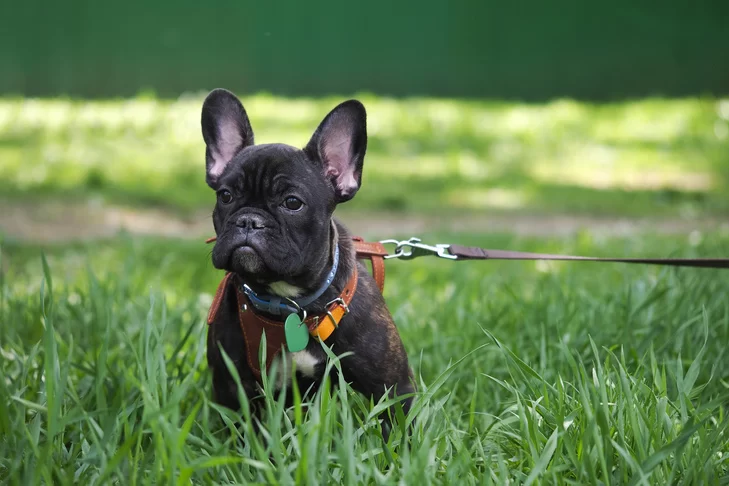How to Train a Dog to Walk on a Leash: A Comprehensive Guide
As a dog owner, one of the most important skills you can teach your dog is how to walk on a leash. It sounds simple enough, but for many dogs, leash training can be a challenging experience. Whether you're a first-time dog owner or a seasoned pro, understanding the basics of leash training is crucial for building a strong and positive relationship with your dog. In this guide, I'll walk you through the process of leash training, step by step, and share my personal tips to make the experience enjoyable for both you and your dog.
1. Start with the Right Equipment
The first step in leash training is selecting the right equipment. You'll need a suitable leash and collar or harness. I personally recommend using a harness for smaller or more sensitive dogs, as it offers more comfort and control. For larger dogs, a well-fitted collar can work just as well. A leash that is about 4 to 6 feet long is ideal, as it allows enough freedom for your dog while maintaining control.
Make sure to avoid retractable leashes at first. While they may seem convenient, they can actually make leash training harder, as they give your dog too much freedom. Stick with a standard leash for better control during training sessions.
2. Introduce Your Dog to the Leash Gradually
Before you even start walking your dog, it's important to help them get used to the leash. This is a step that many owners overlook, but it’s essential for setting a positive foundation for leash training. Start by letting your dog wear the leash and harness or collar around the house. Keep the sessions short and positive, offering treats and praise when they don’t try to chew on the leash or paw at the harness.
One technique that worked well for me was to attach the leash and let my dog walk around the house freely, exploring with the leash dragging behind them. This helps your dog associate the leash with freedom rather than restriction. Keep an eye on your dog to ensure they don’t get tangled, and praise them for calm behavior.
3. Begin Training Indoors or in a Quiet Area
Once your dog is comfortable wearing the leash indoors, it’s time to start training. Begin in a quiet, distraction-free area. I started training in my living room, where my dog was familiar with the environment. Keep the sessions short and relaxed. I found that 10-15 minute training sessions worked best, as they’re short enough to keep your dog engaged but long enough to make progress.
Start by holding the leash loosely and encouraging your dog to walk with you. Use a treat to guide them and reward them for staying close to your side. You don’t want your dog pulling or lagging behind. Whenever your dog walks nicely beside you, offer praise and treats. Positive reinforcement is key to making leash training successful.
4. Practice Basic Walking Commands
During your training sessions, introduce simple walking commands such as "let’s go," "heel," and "stop." These commands help your dog understand the rules of walking on a leash. I started with "let’s go," saying it in a cheerful tone whenever we took a step. As soon as my dog followed me, I praised them with a treat. This created a fun and positive association with the commands.
“Heel” is another important command to teach your dog. When you say "heel," your dog should walk beside you without pulling. If your dog begins to pull ahead, stop walking and wait for them to return to your side before moving forward again. I found that stopping whenever my dog pulled was a very effective method to teach them not to tug on the leash.
5. Take Your Training Outdoors
Once your dog has mastered walking on a leash indoors, it’s time to venture outside. Begin in a quiet, familiar area like your backyard or a nearby park. Outdoor training introduces new distractions, such as other dogs, people, and animals, which can be a challenge for your dog. Stay calm and patient, and remember to keep training sessions short and positive. Always use a calm and consistent tone when giving commands.
For me, taking my dog to a quiet park in the early morning was ideal. There were fewer distractions, and it allowed us to focus on the training without the chaos of a busy street or dog park. As your dog becomes more confident walking on the leash outdoors, gradually increase the level of distraction.
6. Overcome Common Leash Walking Problems
Leash training isn’t always smooth sailing. Many dogs struggle with pulling on the leash, which can be frustrating. If your dog pulls, try stopping every time they begin to tug. Stand still and wait for them to return to your side before moving forward. This method teaches your dog that pulling leads to a standstill, while walking calmly by your side leads to progress.
Another common issue is dogs that become overly excited when they see other dogs or people. If your dog gets too excited or reactive, try distracting them with treats or a favorite toy. Redirect their attention back to you and encourage calm walking. Consistency is key here—don’t let your dog get away with reactive behavior. Over time, they’ll learn to focus more on you and less on distractions.
7. Be Patient and Consistent
Leash training takes time and patience, and it’s important not to rush the process. Some dogs pick up the skills quickly, while others may need more time. Stay consistent with your training and keep sessions fun and positive. If you encounter setbacks, remember that it’s all part of the learning process. With time, your dog will learn to walk calmly and confidently on a leash.
One of the most rewarding moments for me was seeing my dog confidently walking by my side, without pulling or darting off in every direction. Leash training not only helps improve your dog’s behavior but also strengthens the bond between you and your pet. Enjoy the process and celebrate the small victories along the way.
8. Enjoy Walks Together!
Once your dog is walking well on a leash, take the time to enjoy walks together. Regular walks provide essential exercise and mental stimulation for your dog, while also offering you the chance to bond and explore new places. Walking with your dog is one of life’s simple pleasures, and leash training is the key to making these walks enjoyable for both of you.
Now that my dog is a pro at leash walking, we can explore new trails, visit dog-friendly cafes, and simply enjoy spending time together outdoors. Whether you’re walking through the park or strolling through your neighborhood, the connection you share with your dog grows stronger with every step.












